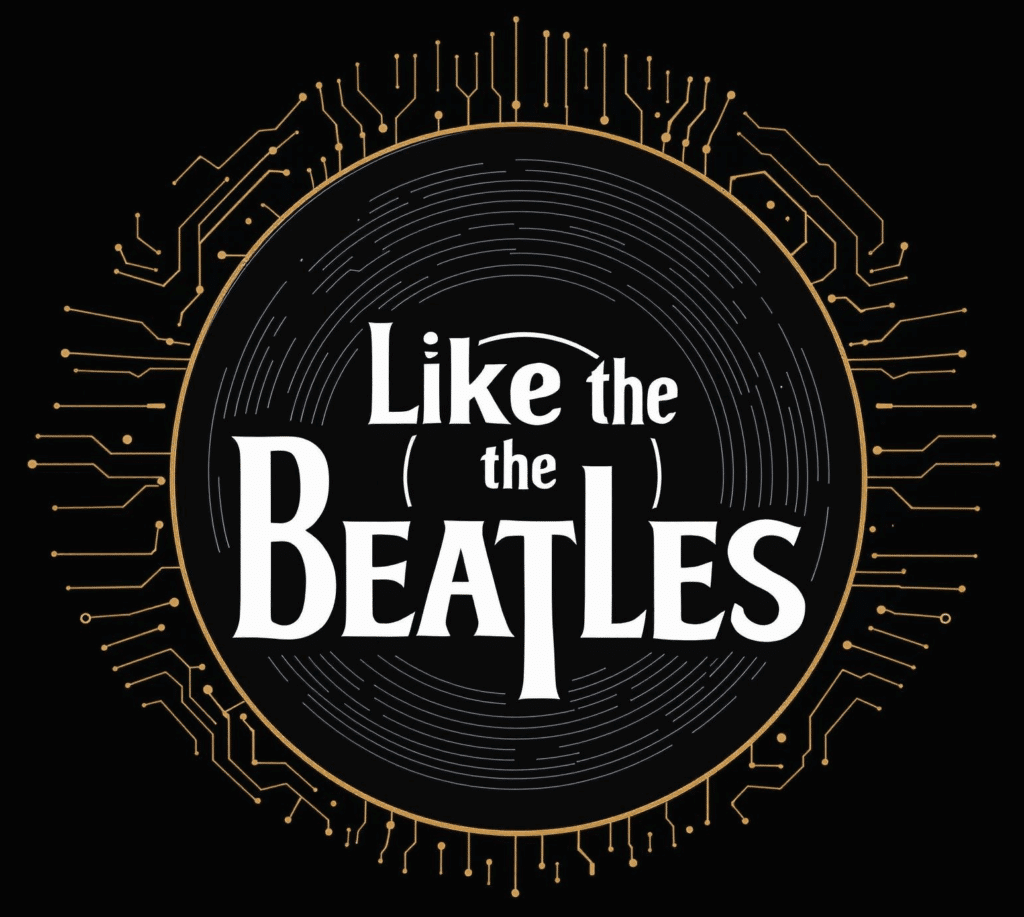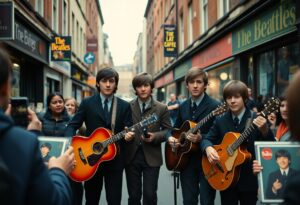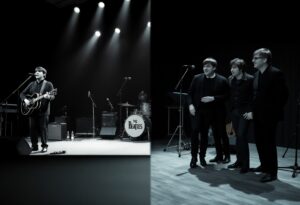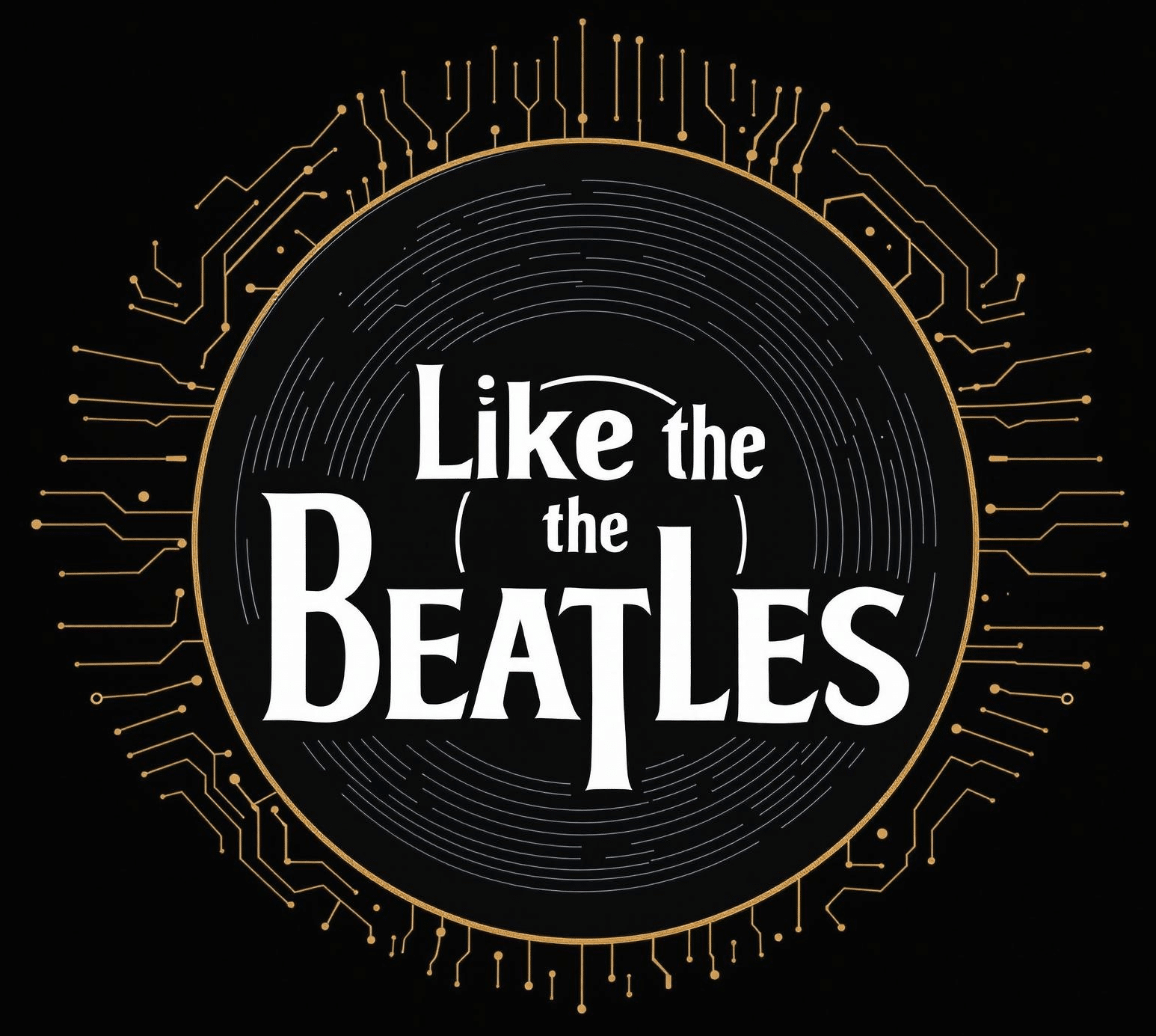It’s fascinating to research into the remarkable evolution of The Beatles, a band that not only transformed modern music but also changed cultural landscapes around the globe. As we explore their journey, I invite you to consider how their early struggles, innovative sound, and unyielding creativity paved the way for an enduring legacy. From their humble beginnings in Liverpool to their meteoric rise and eventual global impact, you’ll find that every step taken was filled with triumphs and challenges that shaped who they became as artists.
Early Years and Formation
To understand the genesis of The Beatles, we must first explore their early years, where four young musicians began to shape their identities and talents. Their journey commenced in Liverpool, shaped by diverse influences that fueled their passion for music and creativity. As they united their individual talents, a remarkable harmony emerged, setting the stage for a legacy that would transcend generations.
The Quarrymen and Initial Influences
Among the first steps towards The Beatles’ transformation was the formation of The Quarrymen in 1956. This skiffle group, led by John Lennon, was heavily influenced by American rock and roll artists like Elvis Presley and Chuck Berry. Their eclectic mix of inspirations fueled the band’s creativity and laid the groundwork for the unique sound we would later recognize as iconic.
Liverpool and the Merseybeat Scene
On the cusp of the 1960s, Liverpool became a vibrant hub of music, giving rise to the Merseybeat scene that would soon captivate the world. The Beatles, often playing at clubs like The Cavern, tapped into this energetic environment, refining their sound and performance style. The local scene was buzzing with talent, resulting in friendly rivalries and collaborations that shaped their musical evolution.
In fact, Liverpool’s Merseybeat scene played an vital role in The Beatles’ rise to fame. The band thrived in an atmosphere brimming with innovation and creativity, experimenting with diverse musical styles and captivating live performances. Their connection to the city also enriched their songwriting, drawing upon the cultural backdrop of working-class life. With a blend of catchy melodies and relatable lyrics, they gradually won over audiences, marking the beginning of a revolutionary wave in popular music that would soon extend far beyond the streets of Liverpool.

Breakthrough and Rise to Fame
Some of the most memorable moments in music history can be traced back to The Beatles’ breakthrough, as they transformed from a local band in Liverpool into a global musical force. Their unique sound, charismatic personalities, and innovative songwriting quickly captivated audiences, paving the way for their meteoric rise to fame. This journey not only influenced popular culture but also changed the music landscape forever, setting the stage for future artists.
“Love Me Do” and Chart Success
At the forefront of The Beatles’ ascent was their debut single “Love Me Do,” which captured the hearts of listeners and marked the beginning of their success in the charts. Released in October 1962, the song climbed to No. 17 on the UK charts, highlighting their potential and establishing a solid foundation for their subsequent hits.
Beatlemania: The Global Phenomenon
Among the early signs of The Beatles’ immense popularity was the overwhelming phenomenon known as Beatlemania. The term described the fan frenzy that surrounded the band, marked by frenzied screaming, mass gatherings, and an iconic fan base ready to support them at every turn. This unprecedented level of adoration showcased not only their musical talents but also their cultural impact during the early 1960s.
Love how Beatlemania took hold of the world, turning concerts into chaotic events filled with ear-piercing screams and frenzied fans. Their unmistakable blend of charm and talent ignited a following that crossed oceans, with fans lining up for hours to catch a glimpse or hear their favorite tunes live. The rise of media coverage heightened the excitement, showcasing the Fab Four as not just musicians but cultural icons. With record-breaking sales and sold-out shows, The Beatles created an extraordinary movement that would leave a lasting legacy.
Musical Evolution and Experimentation
Despite beginning their career with simple melodies and catchy pop tunes, The Beatles launched on a remarkable journey of musical evolution that defined their legacy. From their early days in Liverpool to their groundbreaking experimental phase, they continuously pushed the boundaries of popular music. Each album showcased their ability to adapt and grow, incorporating various influences, which ultimately shaped the sonic landscape of the 1960s and beyond. This willingness to innovate allowed them to stay relevant and resonate with listeners across generations.
Innovative Albums: From “Help!” to “Sgt. Pepper’s”
Peppers represented a watershed moment in The Beatles’ discography. Their transition from the conventional pop of “Help!” to the avant-garde “Sgt. Pepper’s Lonely Hearts Club Band” revealed their artistic ambition and confidence. The latter album flaunted sophisticated musical arrangements, unconventional song structures, and groundbreaking studio techniques. I believe it was this fearless approach to experimentation that not only revolutionized their sound but also influenced countless artists to explore new themes and styles in their own work.
Influence of Other Genres and Cultures
Below the surface of The Beatles’ iconic sound lies a diverse array of influences from various musical genres and global cultures. Their openness to incorporate elements of Indian music, jazz, rock and roll, and folk into their creations forged a rich tapestry that captures the essence of the era. I appreciate how being influenced by diverse cultures allowed them to push the envelope, fuse styles, and create something genuinely unique. This blending of genres was a testament to their artistic vision and willingness to explore different musical landscapes, ultimately enriching their music and captivating audiences around the world.
It is fascinating to see how The Beatles not only took cues from their contemporaries but also sought inspiration from outside the western music scene. Their foray into Indian instruments and scales in songs like “Norwegian Wood” illustrates their eagerness to experiment and embrace international sounds. This enriched their musical palette and fostered a deeper connection to their audience, as songs like “Tomorrow Never Knows” blended psychedelic rock with electronic and world music elements. As you explore into their catalog, you will discover how their musical journey reflected an evolving global landscape, showcasing their ability to create timeless art that resonates with listeners across generations.
The Impact of Film and Media
All of The Beatles’ journey was significantly enhanced through their engagement with film and media, which helped them connect with a broader audience. This innovative approach set them apart from other bands of the era, contributing to their legendary status and allowing their music to resonate across generations. Their cinematic ventures not only showcased their musical talents but also their personalities and artistic vision, leaving a lasting impact on the music and film industries alike.
A Hard Day’s Night and Magical Mystery Tour
Above all, *A Hard Day’s Night* marked a watershed moment in their career, intertwining music with narrative in a way that captivated audiences. This 1964 film offered a glimpse into their lives, blending humor, music, and charm, while *Magical Mystery Tour* explored more experimental territory, although it met with mixed reviews. Together, these films showcased the band’s ability to push creative boundaries and evolve their image, deeply influencing popular culture.
The Role of Television in Popularizing The Beatles
Magical moments were captured on television, which played a pivotal role in elevating The Beatles to international stardom. Their appearances on shows like *The Ed Sullivan Show* and various BBC broadcasts introduced them to millions, establishing a cultural phenomenon that was unprecedented at the time. This connection through the screen allowed fans to engage directly with the band on a personal level.
Hence, the impact of television cannot be overstated as it significantly contributed to The Beatles’ rise. Their *appearance on *The Ed Sullivan Show* in 1964 attracted an audience of over 73 million viewers, demonstrating the band’s immense popularity. This was more than just a performance; it served as a launchpad for Beatlemania in America. The Beatles swiftly became household names, and through appearances on various television specials, they reached unprecedented heights. This unmatched exposure solidified their cultural dominance and showcased their influence on not just music, but social dynamics of the era. Television helped to shape their image, making them icons in the hearts of many.
Personal Challenges and Creative Differences
Many fans are often unaware of the personal challenges and creative differences the Beatles faced throughout their illustrious career. As their success skyrocketed, so did the pressure to produce new music and maintain their public personas. This environment often led to tensions among the band members, ultimately influencing their artistic direction and individual relationships.
The Stress of Fame and Internal Conflicts
Behind the glimmer of fame, the Beatles grappled with immense pressure and internal conflicts. The demands of touring, media scrutiny, and the burden of expectations took a toll on their well-being, resulting in disagreements over creative choices that often threatened their unity.
The Evolution of Their Sound and Vision
Beside these challenges, the Beatles continuously evolved their sound and artistic vision. Their innovative approach to music allowed them to explore new genres while pushing the boundaries of what popular music could represent.
But as they navigated this evolution, the band members found their individual preferences and aspirations increasingly at odds. The transition from the upbeat melodies of their early years to the more complex and experimental works of “Sgt. Pepper’s Lonely Hearts Club Band” and “The White Album” showcased their desire to innovate and reflect their personal experiences. While this journey led to groundbreaking music, it also exacerbated tensions within the group as each member sought to express their unique vision, ultimately impacting the coherence of their collaboration.
Final Years and Legacy
Unlike their meteoric rise in the 1960s, The Beatles’ final years were marked by internal tensions and a quest for individuality that ultimately led to their breakup. Despite the challenges they faced, their music continued to evolve, culminating in the poignant and introspective “Let It Be” album. This period, though tumultuous, solidified their status as cultural icons, ensuring their enduring legacy in both music and society.
The Let It Be Sessions and Breakup
Along the tumultuous journey of The Beatles, the “Let It Be” sessions epitomized both their incredible creativity and the cracks forming within the band. The recording process was fraught with disagreements, as each member sought to assert their vision. Ultimately, these sessions highlighted the growing rifts that would lead to their eventual breakup, marking the end of an era.
Lasting Influence on Music and Culture
Against the backdrop of their split, The Beatles’ music left an indelible mark on generations. Their innovative approach to songwriting and recording redefined popular music and opened the door for countless artists. You can see echoes of their influence in modern genres, including rock, pop, and even hip-hop.
Due to their groundbreaking experimentation with sound and willingness to tackle social issues, The Beatles became more than just a band; they became a cultural phenomenon. Their songs resonate with themes of love, peace, and personal introspection, which continue to inspire artists worldwide. As I reflect on their work, it’s clear that their lasting legacy transcends music, shaping not only the industry but also societal movements that followed. The Beatles taught us the power of creativity and the importance of exploring new frontiers, encouraging future generations to push boundaries and think differently.
Conclusion
Now that we’ve explored the significant steps in The Beatles’ journey from their beginnings to their lasting legacy, I hope you appreciate the impact they made on music and culture. You can see how their innovative approach not only transformed the music industry but also influenced countless artists that followed. Your understanding of their evolution from a local band to global icons showcases the power of creativity and collaboration. As you reflect on their journey, you might find inspiration for your own path in the arts or beyond.











